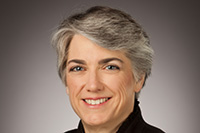
By now, we’ve all viewed with horror the images of former police officer Derek Chauvin killing George Floyd by kneeling into his neck for at least 8 minutes. We’ve seen the video in which white men killed Ahmed Aubry as he was out jogging. We read about Louisville police officers killing Breonna Taylor in her home. We’ve also learned about white people calling police because they felt black and brown people shouldn’t be where they were—whether birdwatching in a park or studying in a dorm. These injustices against humans of color occur every day in our country. Every. Day.
In addition, we continue to witness structural racism within our judicial system—the system that we study and teach about. Prosecutors often decide not to charge police officers and white people who kill black people. Even when video evidence exists, delays and refusals occur. Often, charges do not materialize until public protests and pressure becomes too intense to turn a blind eye.
Now, people have taken to the streets. What we see in Chicago and across the country is pain personified. Pain in protest. Pain in rebellion against generations of injustice. As Doctor King said, “A riot is the language of the unheard.”
As the Southern Poverty Law Center stated yesterday, “It is absolutely imperative that local police departments and district attorneys investigate, arrest and prosecute officers and all who violate the rights of the people who live in the communities they are charged to serve. Equally important, law enforcement must stop responding to peaceful protest of police killings with more violence. Police are obligated to protect those in the community, and punishing peaceful protest is a gross abuse of human rights.”
As a law school community, we acknowledge this pain and injustice. We’re not turning a blind eye. We admit that police brutality and the unjust killing of black people in America exists. It’s real and not debatable. Silence and ignorance are not options.
We also recognize that we play a part. As both individuals and a community, we decide whether to observe passively or be allies to fight against racism. As we create the next generation of attorneys and lawmakers, we decide if we discuss structural inequalities and systemic racism. In our relationships with each other on campus and how we function as an institution, we decide if we’ll just give lip service to the problem or embrace the hard conversations that lead to equity and inclusion—and challenge norms.
The steps we will take include the following:
- We will foster dialogue on campus about structural inequality and systemic racism in campus-wide programs and within the classroom. Our Diversity, Equity, and Inclusion Committee has been working on this project. With the addition of Professor Teri McMurtry-Chubb to our tenured faculty, we add another expert voice. She is working hard this summer on modules that professors can use in their courses for this purpose.
- We will continue to create physical and virtual spaces for members of communities within the Law School to gather together around their shared experiences, but also to intersect and collaborate around inclusion.
- We will acknowledge the communities in our Law School experiencing the pain and injustice of racism, such as police brutality, COVID-19 related xenophobia, and more.
- We will speak about privileged versus non-privileged experiences.
As we move forward, we’ll need to collectively discuss how to be allies against systemic racism. As noted above, we are not just starting these steps. Our Office of Diversity, Equity & Inclusion and our Dean for SCALES and Inclusive Excellence, in Fall 2019 and Spring 2020 programming, explored 400 years of slavery, the argument for slavery reparations, and structural inequality in housing, education, voting rights, and mental health in disadvantaged communities. Our students connect in cultural and ethnic communities via the Office of Student Life and collaborate to create programming and student support. Several of our clinics, such as Fair Housing and CESEC, work in the communities most impacted by structural racism and provide legal and business support. In the past three years, we have added more faculty and staff of color. We have affirmatively included diversity, equity, and inclusion in our new mission statement, core values, and strategic priorities.
In communications like this, we’ve repeated our institutional values and have continued to advocate against discrimination and harassment on-campus to create an inclusive, safe community. This is a start, but we must do more.
To continue the conversation and encourage dialogue, consider these concepts about how to be an ally and antiracist from Ibram X. Kendi’s book, How to Be an Antiracist. An ally/antiracist is one who:
- Sees the racial groups as equal and does not denigrate or lift up any particular racial group.
- States that racial inequity results from racist policies, not any characteristic of the racial group. They then become part of the struggle to challenge and change racist policies by donating their time, talents, and treasure.
- Understands that the races are meaningfully the same in their biology and there are no genetic racial differences.
- Rejects cultural hierarchy and equalizes cultural differences among racial groups.
- Makes racial group behavior fictional and individual behavior real.
Finally, on June 4, 2020, from 5-6 p.m. June 8, from Noon-1 p.m.(CT), please join us on Zoom for “A Discussion about Race and Injustice in America” with Bakari Sellers—attorney, activist, author, and CNN commentator—moderated by Professor Teri McMurtry-Chubb.
Being an ally is a day-to-day, intentional choice that we have to make in our personal interactions. But as attorneys and those studying the law, we need to also think about the systems that contribute to and exacerbate racism. These are tough challenges. But, working together and talking together, we can make a difference.
Darby Dickerson
Dean and Professor of Law
